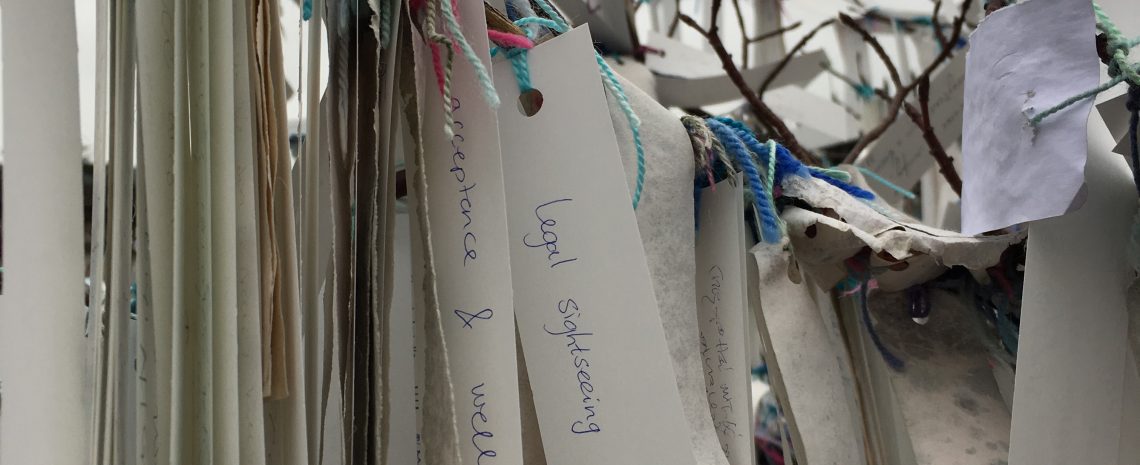by Renske Vos
“If the law were a colour”
[it would be gold]. (…)
“Why gold? ‘Because this is not a criminal
court’, he says. ‘It’s not a place concerned
with prisons and punishments. It’s [to] do with
relations between European countries, with
constitutional concerns. And anyway, I thought
the sky over Luxembourg is often so sad that it
would be nice, somehow, to catch the sun and
bring it here.’”
Dominique Perrault
in Jonathan Glancey “Let there be light”
The Guardian, 2 December 2008.
Cross posted at DPA

The gold stands out, but on tours of the Courts of Justice of the European Union guides elude how it is in fact black and gold that you see. An echo, affirmed by Dominque Perrault Architects, of the foundational event at the heart of Europe: the fusion of coal and steel. And indeed, when you look more closely you see that:
Coal has its own
brightness, a gloss, a sheen. You can see the
compacted layers of dead wood – millions of
years dead – in the strata on the faces of the
chunks of good coal. They shine. They give out
a black sparkle. The trees ate the sun’s energy
and the furnace will release it. Coal is glossy.
Coke is matt, and looks (indeed is) twice-
burned, like volcano lava; the dust on coal
glitters like glass dust, the dust on coke absorbs
light, is soft, is inert. Some of it comes in little
regular pressed cushions, like pillows for dead
dolls, I used to think, or twisted humbugs for
small demons.
A.S. Byatt
‘Raw Material’ in Little Black Book of Stories
(Vintage: 2004, 199).
The coal mines and steel factories of Europe are the theme that string the fifth extension of the Curia together. It comes out in 263 Venetian Moreno-glass lamps, made after the lights used in the mines, speckled with gold dust, assembled in an infinity loop floating above the entrance hall. It speaks from the exposed black-matted steel structure, from the choice of signposting throughout the building, and then there is the mesh.
It is most obvious in the great baldachin above the main courtroom. Yet then it is also not. Because the total seems like a great curtain, or a circus tent, a flowing bell-shaped dome, perhaps a lantern. It is a mesh of the kind used to prevent damage from avalanches in Italy. It is there to show handwork. It is also there to block views in from the outside, and out from within, so as not to distract from proceedings and at the same time to allow for daylight in. Daylight being an unusual feature for courtrooms, actually. Then all through the building this mesh recurs in various guises. Fine like a knight’s hauberk and crude as on a construction site. Dominque Perrault Architects has patented the technique. In the Curia there is cladding for entrances, as screens in meeting rooms, and even as room divider in the canteen.
When I asked, they said: mesh can take a hit, like justice should be able to take a hit.






Renske Vos is assistant professor in international law at VU Amsterdam. She is one of the founders of legal sightseeing. All images in this post are hers.
This piece is part of the legal sightseeing
mini-blog series on institutional architecture:
view the whole series!

